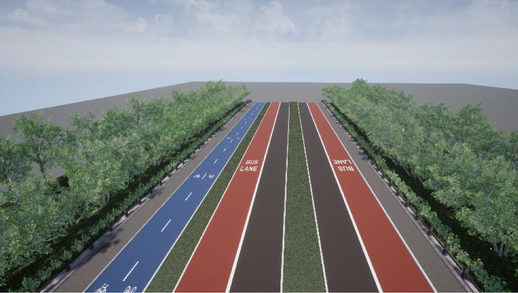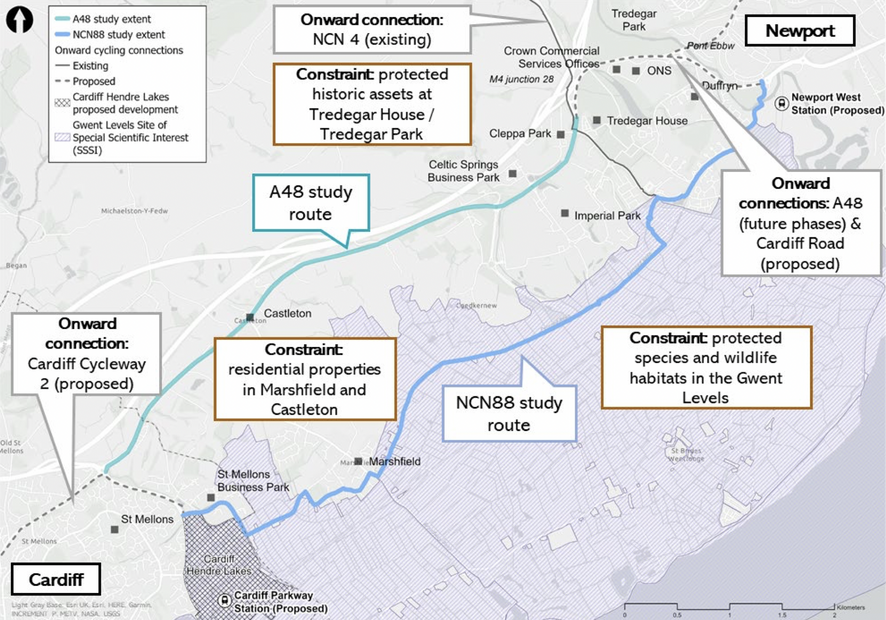Consultation on alternatives to travelling by car on the A48 between the two cities
A CONSULTATION outlining plans to improve walking, cycling and bus routes along the A48 between Cardiff and Newport has been launched.
Transport for Wales, together with Newport City Council and Cardiff Council, have recommended new walking, cycling and bus infrastructure with a focus on inclusive and sustainable transport.
The Welsh Government has now published a consultation document on the proposals and people are asked to respond with their feedback by March 11.
The consultation document says: “Travel between Cardiff and Newport is a key transport corridor in South-East Wales, but options for sustainable travel are limited.
“Currently, the A48 has poor facilities for buses and pedestrians and no provision for cyclists, despite connecting to major employment centres.
“With the right infrastructure, there is an opportunity for journeys between North-East Cardiff and west Newport to be made by bus or cycling instead of by car.
“This would not only improve access to major employment sites, but also contribute to a more sustainable transport system.”

The plans relate to the A48 (rather than the A48M which connects to Junction 29 of the M4) which runs between Cardiff and Newport, with three options being proposed.
Option one provides new, dedicated walking and cycling (active travel) and bus infrastructure on the route, where manageable, whilst retaining current road capacity for general traffic as much as possible.
Key features include a separated two-way cycleway, limited additional bus priority measures, and changes to Marshfield Road junction at Castleton.
There will also be some narrowing of traffic lanes in constrained locations to retain the number of current traffic lanes.

Option two prioritises new, dedicated walking and cycling (active travel) and bus infrastructure. Compared to Option 1, more of the road is given to walking and cycling, with widened footways and improved crossing facilities.
Buses also get more room, with bus priority measures on approaches to junctions.
There is less land acquisition than Option 1, as the number of traffic lanes is reduced and roundabouts are modified to create space for new bus and cycle infrastructure.

Option three aims to deliver the widest range of changes, including the complete replacement of some existing junctions, to give maximum priority to buses, walkers and cyclists.
Under this option there will be a separate two-way cycleway with dedicated signals for cyclists and controlled crossings at every junction to maximise safety for pedestrians. Bus priority measures on all approach to junctions will also be added.
Due to a large land acquisition needed and option three causing the greatest disruption during construction, it has the highest cost.

But the Welsh Government’s vision for improved bus, cycling and walking infrastructure, has met resistance from people worried about the impact on motorists.
Arnold Lampshire, from Llandaff, said: “I am a cyclist and a bus user but reducing a dual carriageway to a single car lane would be madness, it will cause even more traffic jams while the bus lane remains empty 95% of the time.”
Debbie Walsh, from Fairwater, agreed. She said: “I recently travelled up Eastern Avenue, where there’s the bus lane with my sister and we commented how we never see any buses using them.”
Gabalfa resident Nick Bourne added: “It is all one big vanity project and a plan to force drivers off the road altogether.”
A public consultation on the options runs until 11 March 2022. To read the Welsh Government Consultation document in full then visit here.
Residents have an opportunity to respond by completing the online survey accessible through the consultation webpage.
Alternatively, you can download the form and email the completed form to engagement@tfw.wales.



